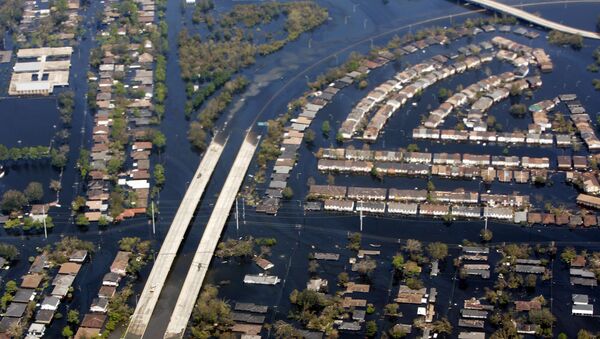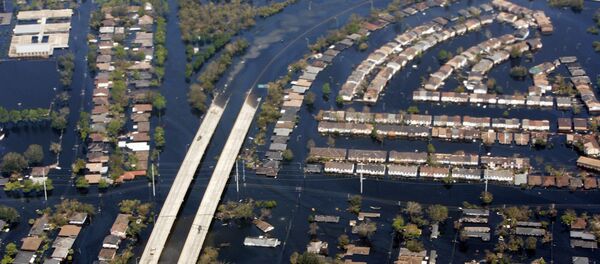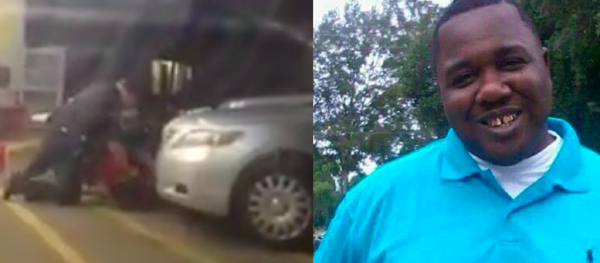After the storm surge receded, a surge of aid flooded into the city, both federal and privately coordinated. Pitt's foundation, established in 2007, aimed to built 150 new homes. As of 2016, the group reported spending $26.8 million building 109 homes, available for $150,000 to residents who received resettlement financing, government grants and donations from the foundation itself, the LA Times noted.
The houses were designed by award-winning architects to be green, adaptive, durable and designed around residents' needs — or at least they were in theory. However, a lawsuit by two of those people claims that the houses were built using "defective, inappropriate and/or insufficient materials" that didn't take into account the Mississippi River Delta's humid, rainy climate.
The proposed class-action lawsuit, filed in Orleans Parish Civil District Court on September 7, alleges that Pitt's foundation never alerted homeowners to issues related to construction materials and design that it knew about.
"The problem is that they're stringing people along, because they're making promises that they'll fix things, and they never do," attorney Ron Austin said before the lawsuit was filed. "Folks are getting sicker, and houses are breaking down every day."
NBC spoke with 11 residents who received homes from Make it Right, who complained of electrical fires; gas leaks; leaky roofs, walls and doors; and fungi — so much fungi.
Many of the residents described everything from mold that they blamed for breathing ailments and migraines to mushrooms poking through their electrical outlets. An August 2012 report by Barclay Assessment Services referenced by NBC's report found mold in kitchen cabinets and elevated levels of basidiospores in the air, products of fungi that "are often associated with advance mold rot caused by a chronic moisture condition," according to the report.
Other residents reported serious ailments that coincided with the onset of such conditions, including trouble breathing, frequent respiratory infections, muscle tremors, impaired speech, breathing problems and memory loss.
While Make it Right did respond to some of the homeowners' complaints, such as caulking holes or adding tile, it seems to have systematically failed to address the most serious problems, such as mold remediation.
The organization has also replaced rotting decks on at least 36 of the 109 homes since 2008, according to a lawsuit Make it Right filed against a lumber manufacturer.
One resident told NBC that she complained to Make it Right every few months since moving into her home in 2011, and that while Make it Right employees came to take pictures of the damage, the problem was never actually fixed.
Several of the houses have had to be torn down outright. One house that was bulldozed in June was described by a New Orleans newspaper, the Times-Picayune, "as a tattered loaf of rotting wood, fraying tarpaulin and ominous open doorways."
However, while the issues raised by the suit cover alleged illegal practices, others that have been perfectly legal have hurt residents just as much, if not more.
Laura Paul, of the nonprofit group Lower Nine, which builds houses in the Lower Ninth for former residents wishing to return, told Sputnik Wednesday that "the biggest impediment to recovery in this community" has been the collapse of personal home ownership.
The Lower Ninth Ward is among the city's poorest, with the average resident making only $16,000 a year and more than one in every three residents living below the poverty line. It was also a neighborhood with much higher than average home ownership before Katrina, and populated mostly by African-Americans.
"Prior to Katrina, the Lower Ninth Ward had one of the highest rates of black home ownership in the nation, and now a great number of those properties, if not the majority of them, have been lost to low-wealth black families because of the intervention or lack of intervention of the government," Paul said.
The Nation noted that before the flood waters had even receded, politicians were declaring the Lower Ninth Ward lost. Alphonso Jackson, then the US Secretary of Housing and Urban Development, told then-New Orleans Mayor Ray Nagin that "it would be a mistake to rebuild the Ninth Ward."
The publication noted that city planners used the flooding as an excuse to "shrink the footprint" of the city, proposing to turn the poor, black Lower Ninth back into swampland, as a way to compensate for the city's steady population decline and white flight in recent decades.
The Lower Ninth was always the first, and sometimes only, district mentioned in such plans, with a myth being constructed that it was the most vulnerable and most heavily damaged by the flooding, despite the fact that parts of the ward were not very heavily damaged at all and that far more affluent sections of the city were further below sea level than the Lower Ninth.
Road Home, created by the Louisiana government in the aftermath of Katrina, set aside $10 billion to help homeowners rebuild by paying them the appraised value of their houses before the storm hit. However, in response to a 2010 lawsuit, a US district judge ruled that Road Home's calculations were discriminatory because the pre-storm value of a house in a predominantly black neighborhood was generally less than one in a mostly white neighborhood, all other things being equal, the Times-Picayune reported in 2010.
Homes in the Lower Ninth had been passed down from one generation to another, making proof of ownership hard to document by itself, to say nothing of the poverty of the neighborhood and historical bank discrimination practices that systematically depressed the property values of homes in majority-black neighborhoods, The Nation noted in a 2015 report on the district's recovery.
By the time the state was found guilty of the practice, nearly all of the program's money had been spent, so in 2011 the Obama administration promised to pay out $62 million to some homeowners — but not all.
So, when Pitt's foundation showed up offering homes for $150,000, many in the ward balked at the price. Many of the foundation's designer homes cost Pitt more to produce than those covered by insurance in more affluent neighborhoods, The Nation noted.
"So you're talking about a program that was found to be discriminatory in a federal court of law — that's the Road Home Program — and as a result of that program, there are upwards of five or six hundred properties in just the northern section of the neighborhood alone that are now owned by an entity called the New Orleans Redevelopment Authority. And they are the property of the NORA directly because of the Road Home program and the fact that the settlements were so low in low-wealth communities of color that people couldn't recover with the funds, and so they walked away from their properties and sold them to the government," Paul said.
She noted that, while a commonly cited statistic says that 36 percent of the Lower Ninth Ward's population has returned since the storm, that's really only a euphemism and not reflective of actual population return, just a return of population numbers.
"The really big issue is re-population of low-wealth communities of color like this one, and I think you're gonna see the same thing in Puerto Rico. The predominantly African-American, and in large part low-wealth, community that made up the population of the Lower Ninth Ward prior to Katrina has been incredibly unsuccessful — and a lot of people would say, and I would not disagree with this, that it was intentionally made difficult for those families to return to their homes."
"And that is the real tragedy. My guess would be, and I know that sounds unscientific but it's a highly educated guess… my guess would be when you get up above Claiborne Avenue by where the levee breach occurred, you're looking at a true population return picture, a much clearer image of what true repopulation looks like, and that's probably about 25 percent today."
However, Paul noted that nearly 100 of Make it Right's houses had gone to pre-Katrina residents, part of the foundation's original mission. "And I think their mission, and their values, and their goals, were good ones at first. I have no reason to think that Brad Pitt didn't have his heart 100 percent in the right place."







